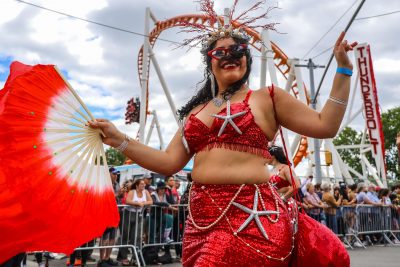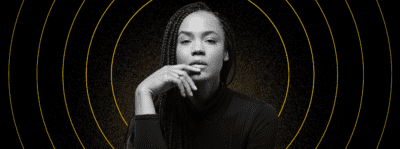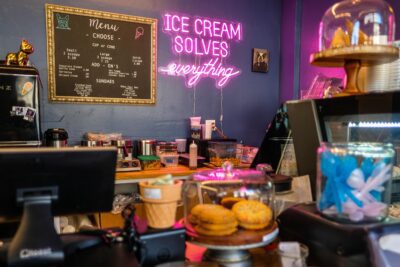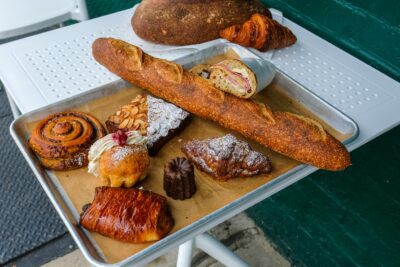All photos by Scott Lynch
‘Black Atlantic,’ a new exhibit in Brooklyn Bridge Park, explores the African diaspora
Monumental new sculptures line the piers and greenway and unpack 'complex hybrid identities' of Black experience
Opening today and running through November, “Black Atlantic” is a sculptural group show along Brooklyn Bridge Park that explores the diaspora of African identities in America through the works of five different artists. The exhibition, which can be found on and around Piers 1, 2, and 3, is the latest installation here from the non-profit Public Art Fund.
The site-specific works, commissioned specifically for the show, are all immediately striking and engage with their surroundings—including the Statue of Liberty, the Manhattan skyline and the New York Harbor—in revealing ways. The waterfront location is itself an integral element of the show that “highlights the complex hybrid identities that have developed through the exchange of culture and ideas over centuries along transatlantic routes,” according to a Public Art Fund press release.
“Black Atlantic” is one of those exhibitions that rewards a deeper dive.
The notes that accompany each individual piece tell us, for example, that artist Leilah Babirye was forced to flee anti-gay violence in her native Uganda after being outed in 2015. Her five totemic works at either end of Pier 1, which she calls “Agali Awamu (Togetherness),” were carved and burnished by hand and chainsaw from tree trunks using traditional African techniques. She calls her figures, which stand as tall as nine feet, her “trans queens … beacons of freedom that welcome an international LGBTQ+ community.”
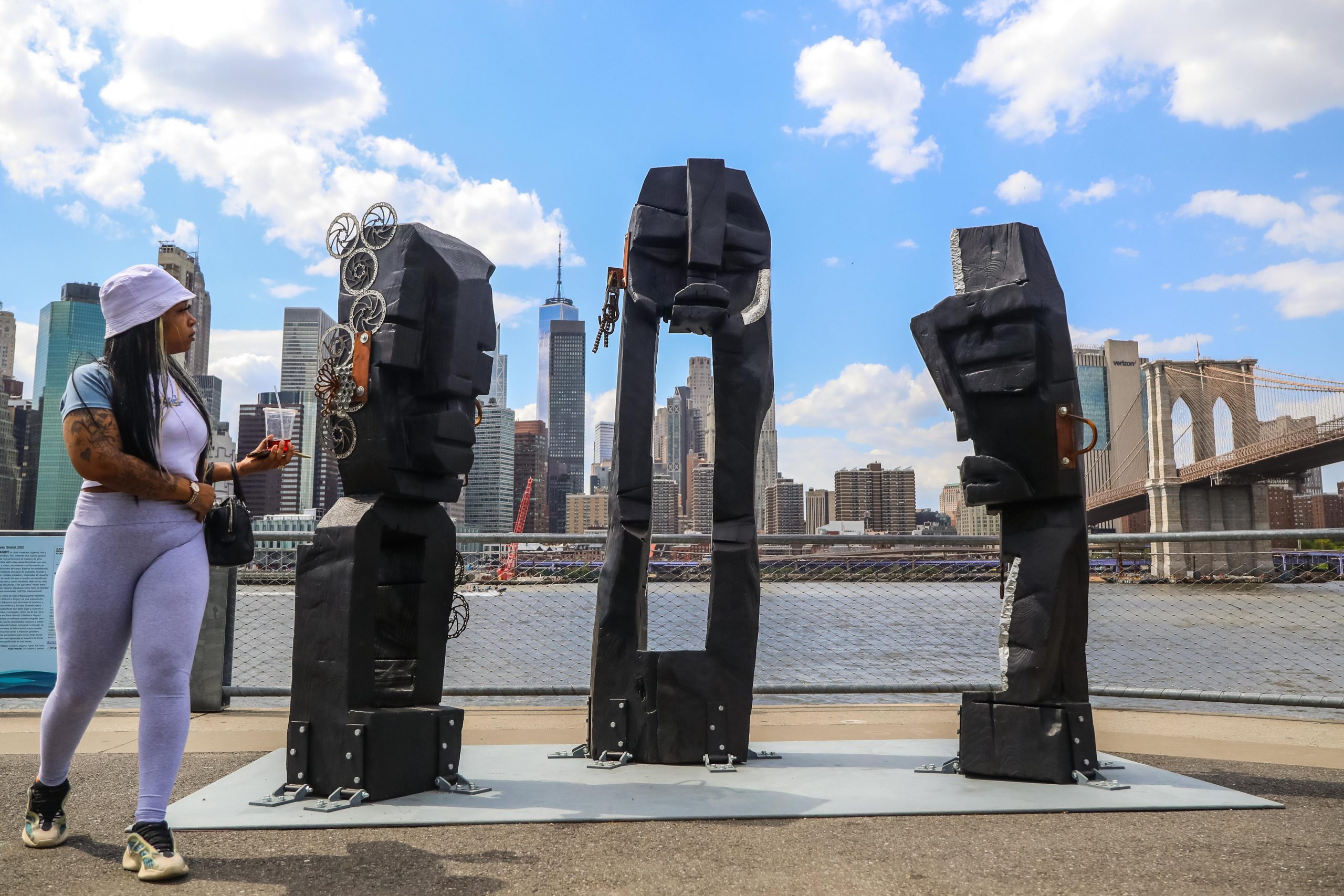
Leilah Babirye: ‘Agali Awamu (Togetherness)’ (Scott Lynch)
“Gulf Stream,” by Hugh Hayden, a wooden dinghy with a startling interior, lays upon the rocks at Pier 2, and is named after the 1899 Winslow Homer painting of a Black man in peril on the open sea. Hayden is a Dallas-born artist who now works in New York City who, along with Daniel S. Palmer, dreamed up and co-curated the “Black Atlantic” exhibition.
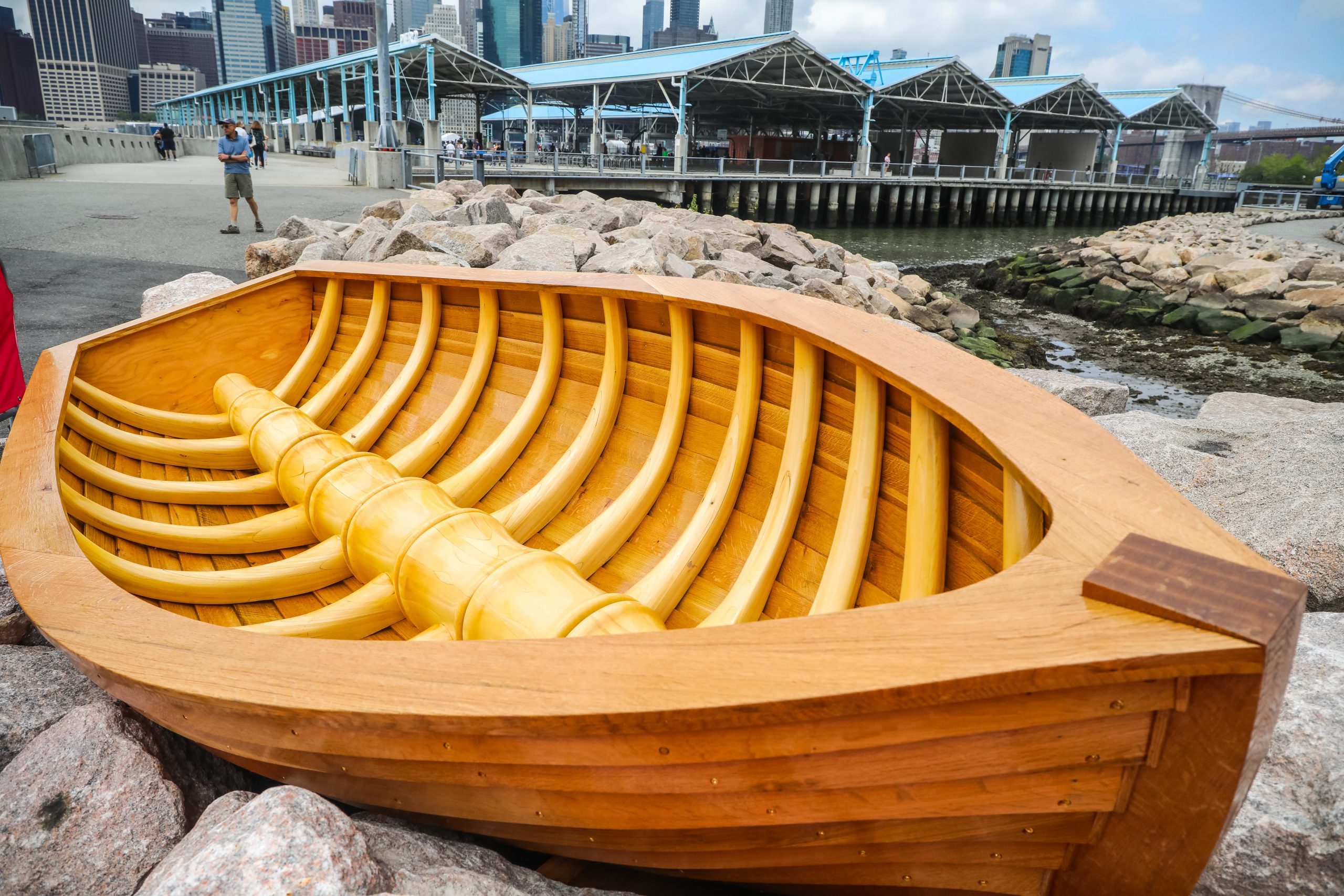

Hugh Hayden’s ‘Gulf Stream’ (Scott Lynch)
Dozie Kanu’s conceptual sculpture, “On Elbows,” commands the high ground above Pier 3, and references the slab culture of tricked-out cars in his native Houston, which he tells Brooklyn Magazine “shaped a lot of my ideas about the industrial world as a young’un.” Here in Brooklyn Heights, the car is replaced by a psychoanalyst’s couch on wheels, accompanied by a tube of black liquid pulsating to the rhythm of a heartbeat.
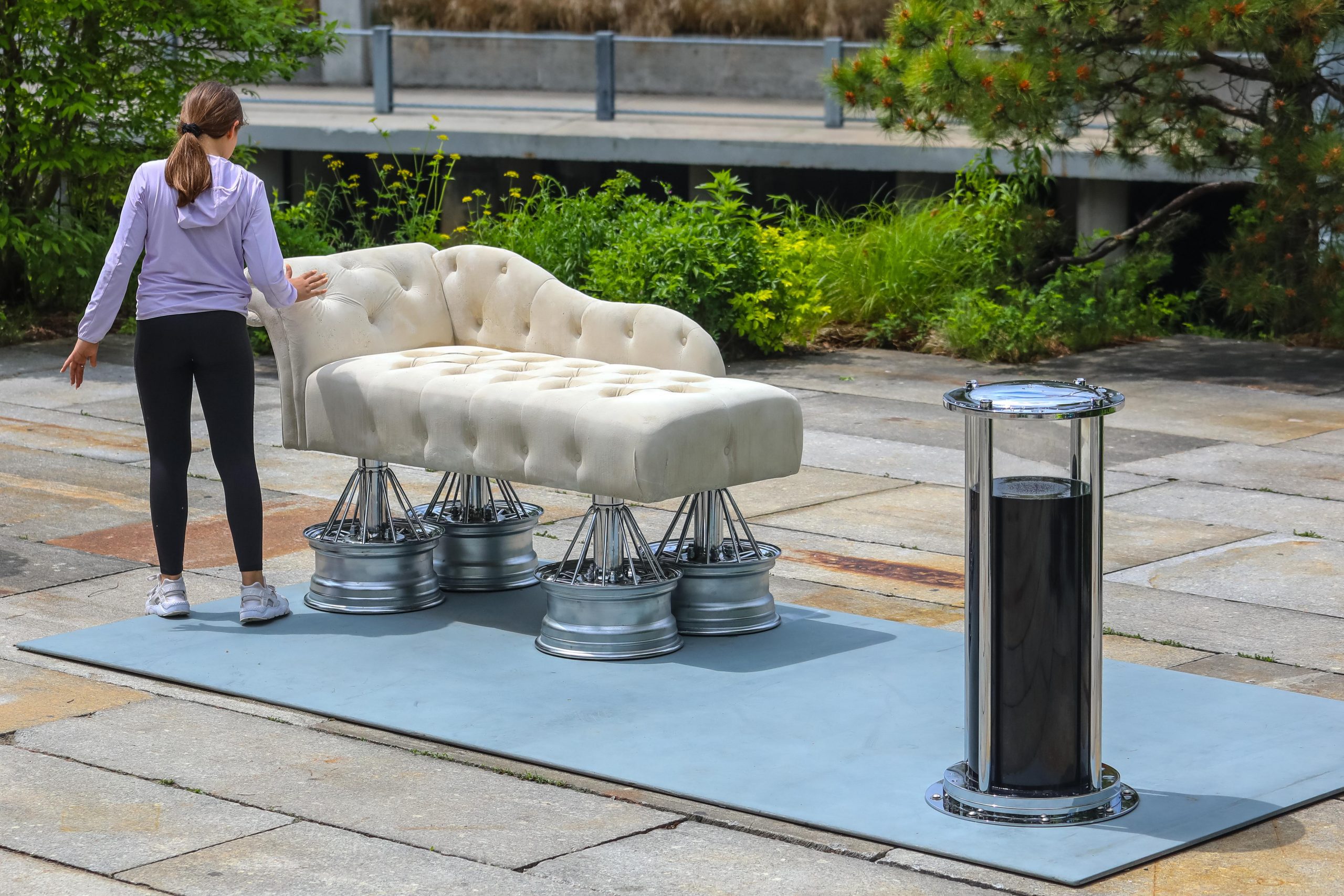

Tag it up: ‘On Elbows’ (Scott Lynch)
Kanu, who was priced out of Bushwick and now lives and works in Portugal, says that he hoped the couch—which looks remarkably like plush fabric but is cast in solid concrete—“gets tagged up.”
The two other works are by Tau Lewis and Kiyan Williams. Lewis’s piece, a trio of large, ornate medallions embedded into the grass near Pier 2, was influenced by what she calls her “years of fascination with crinoids,” marine animals like starfish and sea urchins.
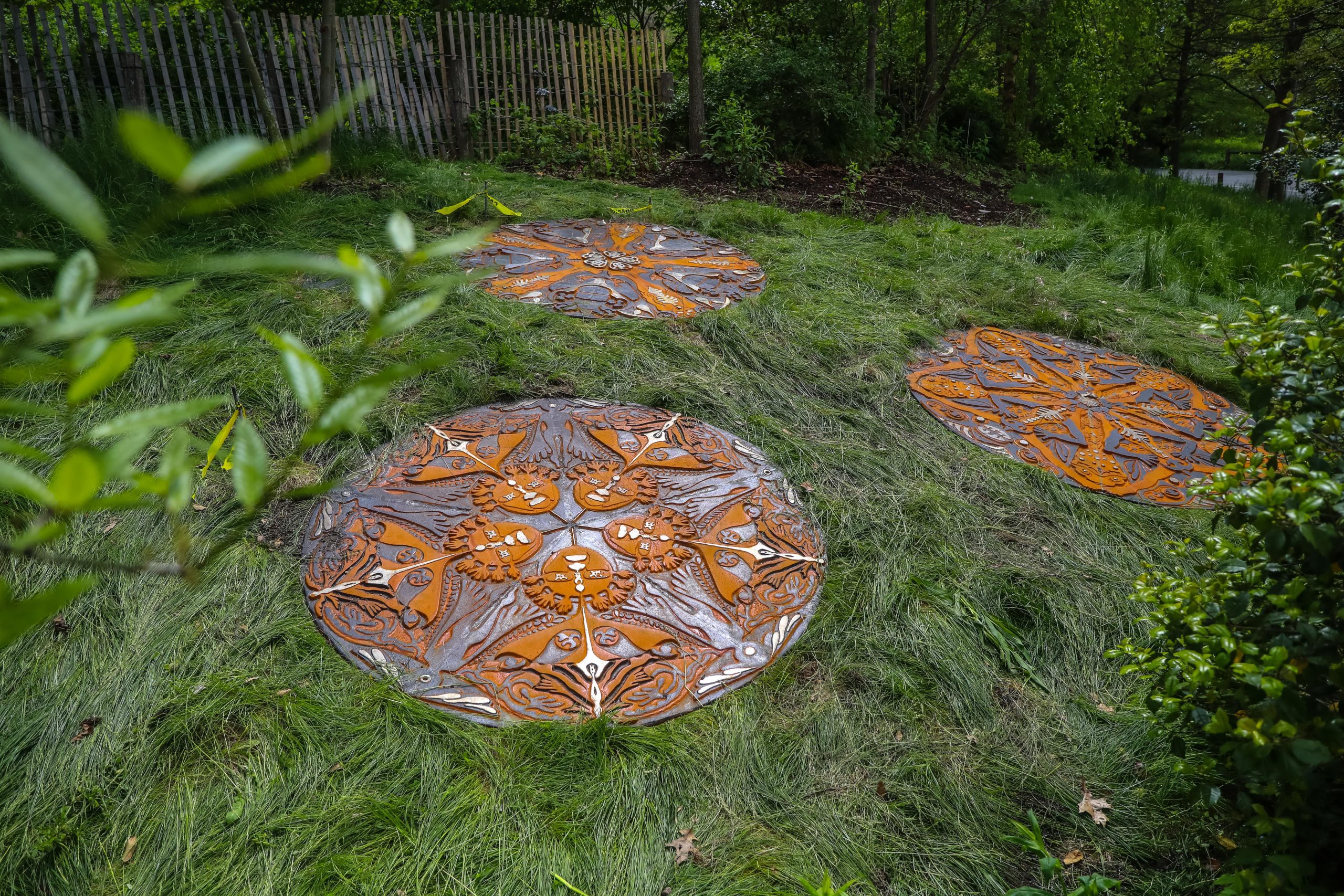

Tau Lewis’s crinoids (Scott Lynch)
And for his massive “Ruins of Empire” in the uplands of Pier 3, Williams reimagines the famous Statue of Freedom, which has topped the US Capitol, a building constructed by enslaved labor, since 1863.
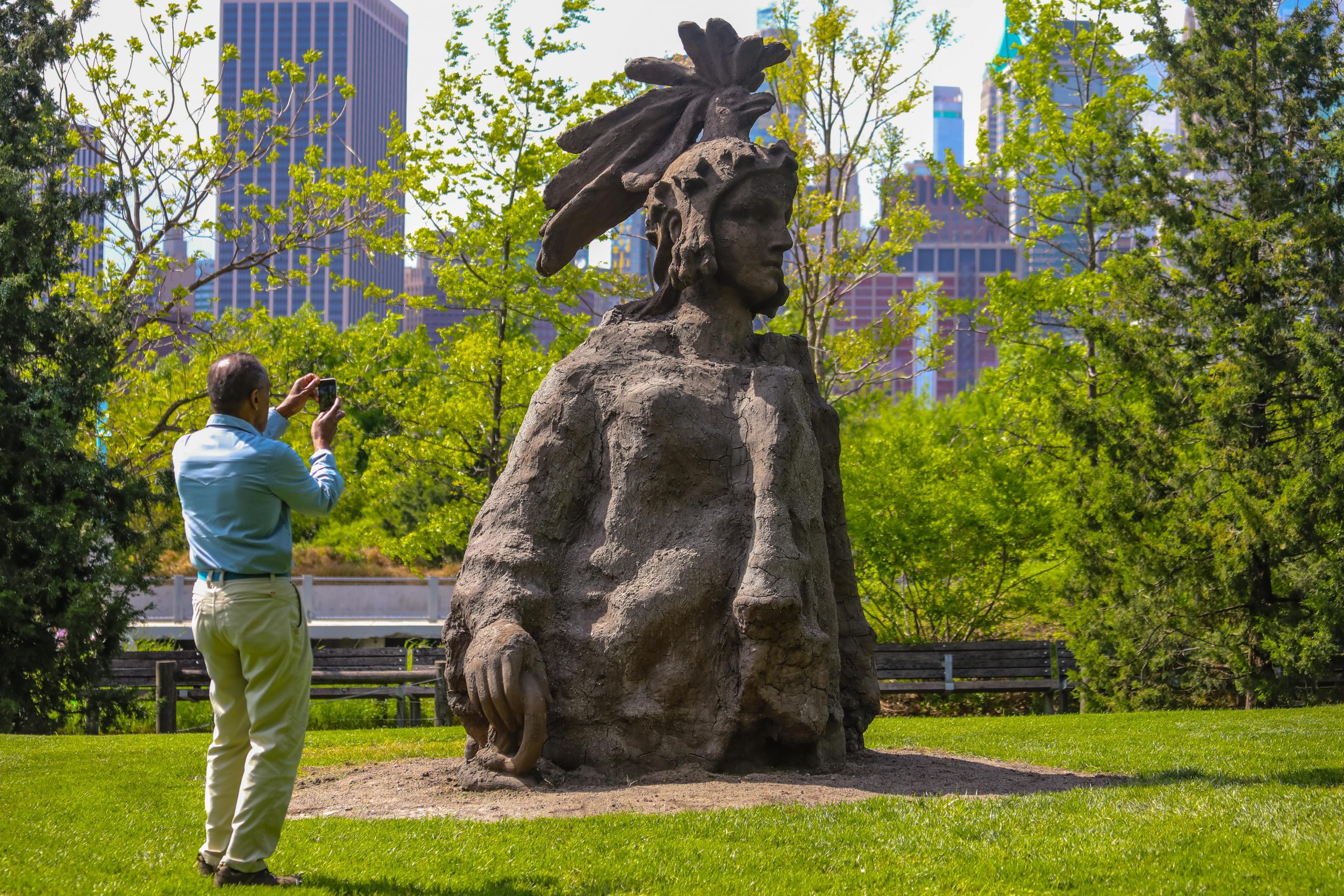

Kiyan Williams’ ‘Ruins of Empire’ (Scott Lynch)
The Public Art Fund’s “Black Atlantic” exhibition will be on display through November 27 at Piers 1, 2, and 3 in Brooklyn Bridge Park.
You might also like 

















